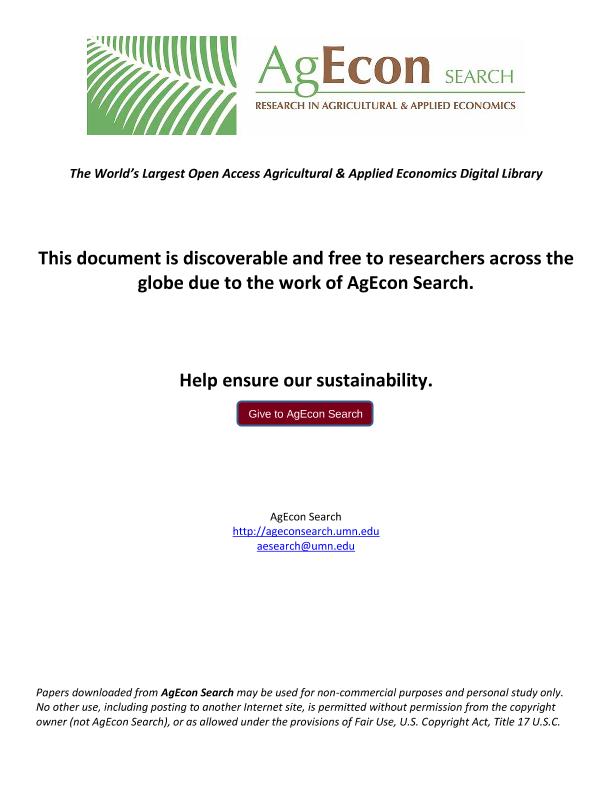Mostrar el registro sencillo del ítem
dc.contributor.author
Bárcia de Mattos, Fernanda
dc.contributor.author
Dasgupta, Sukti
dc.contributor.author
Esquivel, Valeria Renata

dc.contributor.author
Ghani, Sajid
dc.date.available
2024-01-03T14:12:28Z
dc.date.issued
2022-12
dc.identifier.citation
Bárcia de Mattos, Fernanda; Dasgupta, Sukti; Esquivel, Valeria Renata; Ghani, Sajid; Push and Pull Factors in Women’s Rural Employment in India since Covid-19; Foundation for Agrarian Studies; Review of Agrarian Studies; 12; 2; 12-2022; 23-67
dc.identifier.issn
2248-9002
dc.identifier.uri
http://hdl.handle.net/11336/222219
dc.description.abstract
The Covid-19 pandemic had a devastating impact on the world of work in India. It resulted in unprecedented job and income losses, reinforcing the adverse labour market situation of women. There was a significant contraction in demand as the crisis unfolded, and the effects of this contraction was exacerbated by an increase in the demand for unpaid care work as a result of business and school closures, and return migration. Return migration of working-age men pulledwomen out of employment, particularly in rural areas. Job and income losses and lower household income pushed women towards employment as a survival strategy to supplement family income, a strategy captured in the term “addedworker effect.” We postulate that the net result of these competing forces on women’s employment is ambiguous and investigate the pattern of rural women’s labour supply during the Covid-19 pandemic. The paper uses a mixed methods approach. Factors that played a determining role in changes to the labour force status of women-broadly classified through focus group discussions with women in selected rural areas-were further probed through econometric analysis. The main factors were loss of employment by members of the household, changes in household size during the period as migrants returned home, shifts in the time women spent on unpaid care work, and the number of young children in a household. The impact of these factors on entry into and exit from employment were estimated for both women and men in rural and urban India, using data from the Centre for Monitoring the Indian Economy (CMIE) Consumer Pyramids Household Survey (CPHS). The findings show complex coping strategies at the household level where women’s work–paid and unpaid–plays a critical role.
dc.format
application/pdf
dc.language.iso
eng
dc.publisher
Foundation for Agrarian Studies
dc.rights
info:eu-repo/semantics/openAccess
dc.rights.uri
https://creativecommons.org/licenses/by-nc-sa/2.5/ar/
dc.subject
COVID-19
dc.subject
WOMEN
dc.subject
RURAL
dc.subject
EMPLOYMENT
dc.subject.classification
Economía, Econometría

dc.subject.classification
Economía y Negocios

dc.subject.classification
CIENCIAS SOCIALES

dc.title
Push and Pull Factors in Women’s Rural Employment in India since Covid-19
dc.type
info:eu-repo/semantics/article
dc.type
info:ar-repo/semantics/artículo
dc.type
info:eu-repo/semantics/publishedVersion
dc.date.updated
2023-12-26T11:21:48Z
dc.journal.volume
12
dc.journal.number
2
dc.journal.pagination
23-67
dc.journal.pais
India

dc.description.fil
Fil: Bárcia de Mattos, Fernanda. Organización Internacional del Trabajo; Suiza
dc.description.fil
Fil: Dasgupta, Sukti. Organización Internacional del Trabajo; Suiza
dc.description.fil
Fil: Esquivel, Valeria Renata. Consejo Nacional de Investigaciones Científicas y Técnicas; Argentina. Organización Internacional del Trabajo; Suiza
dc.description.fil
Fil: Ghani, Sajid. The Geneva Graduate Institute; Suiza
dc.journal.title
Review of Agrarian Studies
dc.relation.alternativeid
info:eu-repo/semantics/altIdentifier/url/https://ras.org.in/0c943c2aee6fa4fbba787697314cd23e
dc.relation.alternativeid
info:eu-repo/semantics/altIdentifier/doi/https://doi.org/10.25003/RAS.12.02.0017
Archivos asociados
